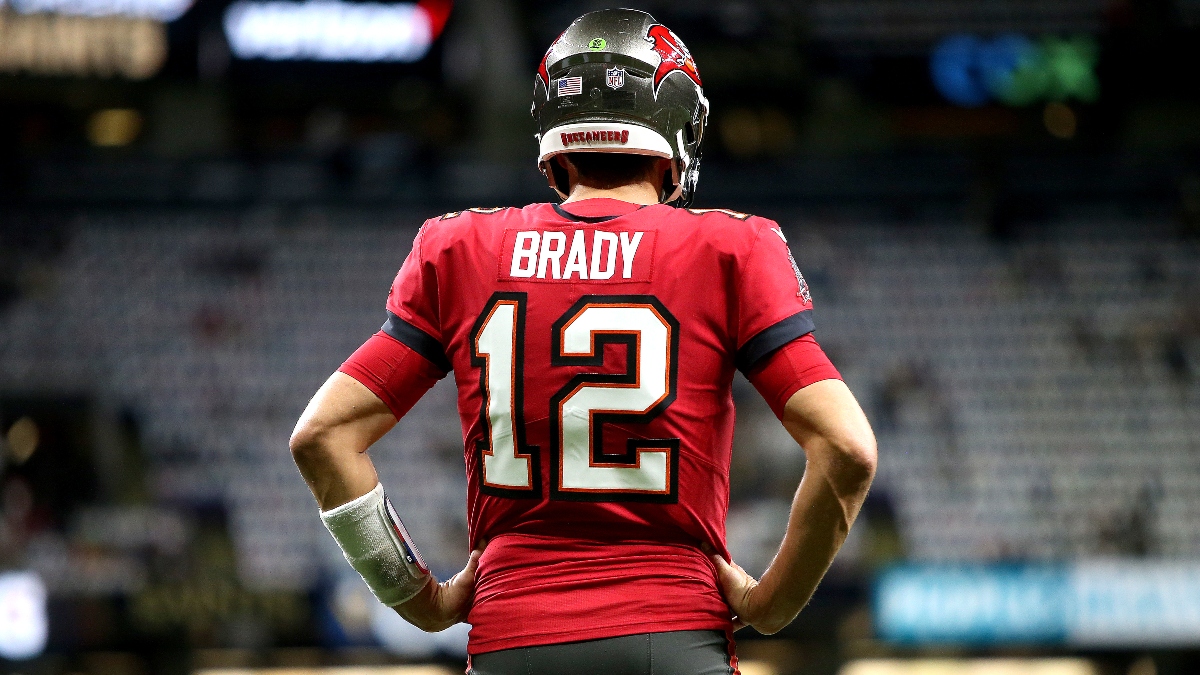On Monday, a New Jersey man named Scott Spina Jr. was sentenced to three years in federal prison for his role in fraudulently obtaining and selling Super Bowl rings with Tom Brady's surname on them.
Spina was able to order rings made for players' friends and family — which are smaller and less valuable — through Jostens, which made the 2016 Patriots rings after New England came back from a 28-3 deficit to beat the Falcons in Super Bowl LI.
But how would a 20-year-old completely unrelated to Brady dupe everyone into believing he was a part of the quarterback's inner circle?
No one involved, including Jostens, would speak on the record to the Action Network, but we were able to piece together how Spina pulled off the feat through a source with knowledge of the situation.
Jostens is the leader in making championship rings, but the margin on the rings themselves is not where they make the bulk of their profits, the source said.
The real money comes from the friends and family items — rings and pendants that are available for supplemental purchase through a colored tri-fold that comes with the original championship rings.
Players, coaches and staff are able to purchase the additional heirlooms for anyone they wish. In order to prevent fraud, each brochure has a unique code, each of which corresponds to a specific player.
An order can't be placed without the brochure code, and the engraving can only consist of the name of that particular athlete or coach.
The story goes that when Spina bought a ring from a player in 2017, the player explained how this process worked, the source said.
Spina then called Jostens and ordered three friends and family rings while posing as the former player, court documents state.
Spina claimed the rings were intended as a gift from the former player for Brady's newborn son, the Department of Justice said in a statement.
So where did a 20-year-old obtain Brady's heavily guarded ring codes?
Or did he not and did Jostens' internal system that prevents fraud like this simply fail?
As aforementioned, Jostens has different codes for each player or coach exactly so this type of fraud can't take place.
If Spina used the former player's codes, but was still able to get Brady's name engraved onto the rings, where did Jostens' fraud detection break down? Why didn't they also dig deeper to ensure a criminal wasn't posing as a player?
We don’t know exactly what happened because Jostens reps aren’t talking.
And Brady's representatives — who have posited in the past that a former teammate ordered the rings under his name — did not immediately respond to requests for comments this week.
Once Spina received the three rings from Jostens, he tried to sell them in bulk for $81,500 to a collector, who then backed out.
Spina then sold all three to Goldin Auctions for $100,000.
One of those rings was resold in Feb. 2018 for $337,000, the most a Super Bowl ring had ever sold for.
At the time, the auction house said that the ring was authorized by Brady himself, a point Brady's representation team later came to deny. That's when Brady's spokespeople said the rings were likely ordered by a teammate.
A few years later, when Goldin was tipped off that the ring was not indeed as advertised — obtained by a member of Brady's inner circle — and that fraud was involved, the auction house returned the money to the buyer and received the ring back.
The friends and family rings have 260 diamonds on them compared to the actual championship ring, which has 283, and is roughly 10% smaller. The rings, though, do have the exact same engraving as the official championship ones.
Spina had received a valuation of roughly $29,700 per ring based on the gemstones and gold alone. That's roughly $10,000 less than the ones the players receive.
This isn't Spina's only brush-up with the law.
In Aug. 2018, at the age of 21, he was sentenced to three years in prison for using a high-end sneaker reselling business — which had athletes as clients — to steal credit card numbers and make purchases for an ATV, a golf cart and other items, said federal officials.
He was released from prison in 2020.



















































